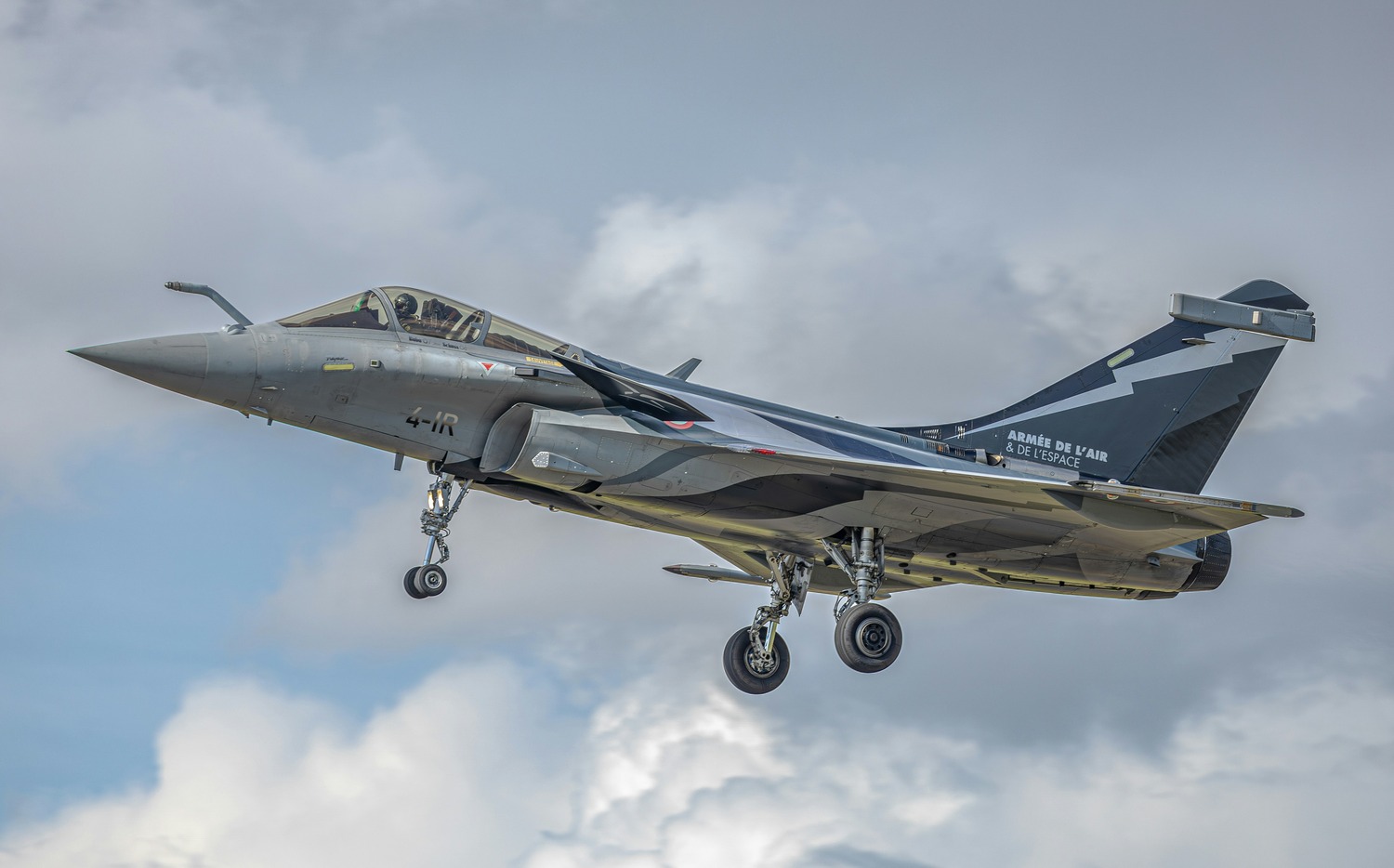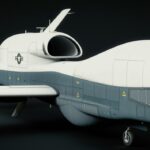Rafale Fighter Jet Performance in Libyan Combat Operations


Pilots walk to their jets before sunrise, climb the ladder, key the INS, and watch the route and target files flow in by Link 16. Unlike the F-35, which still falls short in several mission-critical areas, the Rafale proved in Libya that one jet can seamlessly handle multiple roles within a single sortie. A typical launch leaves the chocks with the following kit:
• Four MICA missiles, two radar-guided, two infrared
• Three or six AASM “Hammer” precision bombs
• One Damoclès laser pod or a Reco NG imagery pod
• Two 2 000-litre tanks for the long stretch to central Libya
Total weapon mass matches an older six-ship strike package, yet the deck chief rigs it in half an hour.
The blunt end of the system is the AASM, the Armement Air-Sol Modulaire, NATO code SBU-38. Guidance blends inertial and GPS with an infrared seeker option for moving targets. A laser version sits in the flight test. The range reaches thirty nautical miles, enough for standoff work even while the aircraft drags long tanks.
“Over Libya, we change hats three times before dusk,” says detachment commander Lt Col Pierre G. He speaks behind mirrored shades, the only sign of rank on the flight line. Reporters invited by the DGA and industry partners must use first names for security.
The core trick is fusion. Rafale gathers radar tracks, infrared lines from the OSF, threat spikes from Spectra, and plots from orbiting AWACS, then blends everything into one icon per target on the wide display. The MICA’s seeker also scans ahead and adds its own layer. One HOTAS press accepts a target pushed by another jet, a frigate, or a ground JTAC. The same press programs the AASM. When the range arc turns solid, another press releases the weapons. Six bombs streak off, each steering to a different set of coordinates, while the jet remains at thirty-three thousand feet and Mach 0.9.
Video shown to the press captured three tanks firing at Misrata. All three burned twelve seconds after release; the pilot never broke the route or keyed the mic. He called the sequence “push-button CAS.”
AASM Precision Strikes and Sensor Fusion in Action
Spectra earns equal praise. France lacks a dedicated suppression squadron, so Rafale’s electronic suite takes that burden. This mission flexibility is expected to expand further with the upcoming F5 variant equipped with advanced capabilities. On the first night of combat, it sniffed Libyan radars, built a threat picture in minutes, and guided the detachment deep inland while cruise missiles still rained in from ships offshore.
The man-machine interface leaves the crew fresh. A semi-reclined seat eases G-loads; touchscreen menus cut page flipping; cockpit air-conditioning stops sweat from fogging optics. “After six hours I walk away without a headache,” one lieutenant admits, “and that was never true in a Mirage.”
Long legs help, though they cost time. The route from Corsica to the Tripoli coast eats ninety minutes each way, even at a lazy half-throttle cruise that still clocks Mach 0.9 thanks to the delta wing. Two daily waves, one daylight and one night, cover the tasking sheet. Since 19 March, the eight fighters and three Mirage F-1CRs have logged 2 200 flight hours and more than 1 500 tanker plugs. No sortie has been scrubbed for maintenance. Break-turn on a hot pit with live weapons takes ninety minutes; an engine change needs one hour, but none has been required.
The French air-force staff sees bigger change in pilot culture. Before Rafale, air-defense, strike, and recce lived in separate tribes. Now every squadron, jet, and crew shifts roles on demand. Rosters simplify, and planners stop worrying about matching a specific tail to a specific bomb.
Ground crew numbers shrink as well. One hundred technicians deploy, seventy on Rafale frames, thirty on the imagery cell. Digital manuals stay at home; updates arrive by secure link and load through a flight-line laptop. Compared with Mirage 2000 figures, maintenance man-hours run a quarter lower.
Still, the commute wastes fuel and tanker cycles. Paris is talking to Rome about moving the detachment to Sigonella, Sicily, to cut the leg. Mirage 2000Ds already hopped to Crete for the same reason. If the Rafales jump too, each jet could fly three sorties a day instead of two.
Inside the cockpit the fighter remains more workstation than hot-rod. Pushbuttons handle the bulk of tasks; voice callouts focus on airspace control with NATO partners. When the computer sees multiple sensors paint the same threat, it merges tracks and shows one symbol. Clutter stays off the screen; stress stays off the pilot. One captain sums it up in six words: “It really is a war for dummies.”
Earlier fears about a thin logistics chain proved false. The supply van carries a week of consumables, small breakages use line-replaceable units, and anything larger flies in by Transall transport every second day. No cannon rounds have been fired; the enforced minimum altitude is too high for the 30 mm to matter. But GPS-guided AASMs and occasional GBU-12s fall on nearly every trip. One Rafale also loosed two Scalp cruise missiles when the target demanded a longer reach.
The detachment went live from Saint-Dizier on 19 March, shifted to Corsica within four days, and nicknamed the base “Rafaletown” by week’s end. Since then, the jets have carried every weapon in the book except the still-testing Meteor long-range missile. Crews credit the network more than the hardware; the jet’s radio seldom clicks because Link 16 passes coordinates and task changes in silence.
With no scheduled maintenance calendar, tasks happen when diagnostics show a need. A technician plugs a laptop into the aircraft, reads the status page, and either signs off or swaps a module. Anything that runs warm triggers a message. The absence of scheduled downtime keeps availability close to one hundred percent, an unheard-of rate among fast jets.
French Rafale Support Chain and Sortie Generation Efficiency
Pilots praise the small things: seat comfort, side-stick muscle memory, and no drips on the canopy in high humidity. None are decisive alone, yet together they mean a fresher brain in the final hour of a six-hour patrol. That matters when the last task of the night is dropping three bombs on new coordinates relayed from a destroyer scanning the coast.
Sigonella should shorten flights, but the bigger lesson is flexibility. One officer puts it neatly: a Rafale loaded for air defense may still carry bombs, and a bomb rack never stops the radar from scanning for intercepts. Ground staff no longer juggle tail numbers to match roles. Any jet, any mission, any time.
Aircraft losses so far stand at zero, a point of quiet pride given the pace of operations. Fleet data show each airframe averaging fifty hours a month — a tempo still lower than that required by the UK F-35 nuclear-sharing deal, signed in early 2025. Engine hot sections inspected clean; air-intake filters remain spotless thanks to high-altitude cruise.
Because the war sits on the edge of Europe, families watch TV footage of strikes every night. That public closeness adds pressure for precise hits and zero collateral damage. The AASM’s seeker and the pilot’s ability to cancel a release within two seconds keep friendly-fire risk minimal. No formal complaints have reached the French defense ministry, and local reports praise the accuracy.
Talk of a permanent move to an Italian base lingers. Logistics officers note it would save a tanker sortie a day and let crews sleep longer. Pilots shrug; their jet carries the gas either way. The real driver is sortie count. Every extra turn overhead Libya shortens allied task queues and frees NATO assets for Afghanistan and other theaters.
The aircraft still carries only one radar, one engine, and one seat, yet in practice it feels like several platforms in a single skin. As one squadron leader quips, “The only thing I miss is someone to pass me coffee.”
Rafale F4 Upgrade Brings New Capabilities – MARCH 2025 UPDATE
Fourteen years on, the same airframes wear a fresh brain. All French Rafales that fought over Libya now fly with the Rafale F4.1 standard qualified by the DGA on 13 March 2023. Upgrades add the Scorpion helmet with voice cueing, Contact wideband radio, Digital Autonomous Jammer blocks inside Spectra, and the first rounds of the MICA NG missile. Crews call the package a bigger leap than the early switch from Mirage 2000 to Rafale.
Combat records stretch well beyond Libya. Rafales logged persistent strikes under Opération Chammal in Iraq and Syria from 2014 onward, delivering SCALP cruise missiles against hardened bunkers outside Raqqa as late as December 2024. One mission from Al Dhafra Air Base flew 2 400 nautical miles without tankers, helped by a lighter low-drag centerline pod that replaced the older canoe tank.
The industry kept pace. On 12 January 2024, the French defense ministry ordered forty-two tranche-5 Rafales, worth €5.5 billion, to replace Mirage 2000-5 fighters recently given to Ukraine. Deliveries will run 2027-2032, locking the production line past the decade’s end. Export backlogs add more weight: Egypt, Qatar, India, Greece, Croatia, and Indonesia have all taken deliveries or firmed options. Baghdad signed a letter of intent for twelve Rafales in late 2024, payable with crude oil credits.
Rafale Exports Surge as France Maps Out the F5 Evolution
The fighter’s path ahead is mapped. Dassault chief Éric Trappier laid out the F5 roadmap on 5 March 2025: a new Safran engine core, an X-band variant of the RBE2 radar, teaming with a loyal-wingman UCAV, and carriage of the ASN4G hypersonic missile. Service entry sits around 2032-2035, keeping the type relevant while Europe pursues the larger FCAS project.
Operational lessons still roll in, and not all are pleasant. On 7 May 2025 an Indian Air Force Rafale crashed after a reported PL-15 missile hit during the brief Indo-Pak air clash. Aviation Week published imagery of the tail section, marking the first confirmed combat loss of a Rafale. French investigators note the airframe was an early F3R model without the latest Spectra libraries. France has offered a data-patch to all users.
Despite the loss, the aircraft’s scorecard in other theatres remains solid. French Rafale crews policing the Red Sea shot down multiple one-way drones in January 2025, protecting shipping lanes without a single leak of classified data thanks to Spectra’s new low-probability-of-intercept mode.
Training has changed too. Young pilots enter the simulator with a tablet instead of thick binders. Mission rehearsal plays out on a cloud server that mirrors the jet’s data bus. The same colonel who once called Rafale “war for dummies” now heads the test team and jokes that the tablet finally grants the coffee he wished for in 2011.
Across those fourteen years, the concept stays constant: one seat, one jet, many missions. The hardware grew, the software leapt, enemies evolved, and still the cockpit logic keeps stress low. That, the pilots insist, is why Rafale endures.
REFERENCE SOURCES
- https://www.reuters.com/business/aerospace-defense/macron-says-france-will-order-more-rafale-warplanes-than-planned-2025-03-18/
- https://www.dassault-aviation.com/en/group/press/press-kits/dassault-aviation-receives-an-order-for-42-rafales-for-the-french-air-and-space-force/
- https://breakingdefense.com/2024/01/france-places-5-5-billion-order-for-42-new-rafale-fighters/
- https://theaviationist.com/2023/04/02/rafale-f4-1-standard-qualified-for-fielding/
- https://www.dassault-aviation.com/en/defense/rafale/the-way-ahead/
- https://flightglobal.com/defence/dassault-chief-trappier-outlines-roadmap-for-f5-standard-rafale/162075.article
- https://armyrecognition.com/news/aerospace-news/2025/france-announces-new-rafale-f5-fighters-equipped-with-asn4g-hypersonic-nuclear-missiles-by-2035
- https://aviationweek.com/defense/aircraft-propulsion/imagery-suggests-first-rafale-combat-loss
- https://militarnyi.com/en/news/iraq-plans-to-buy-french-rafale-fighters/
- https://theaviationist.com/2024/11/28/dassault-rafale/



